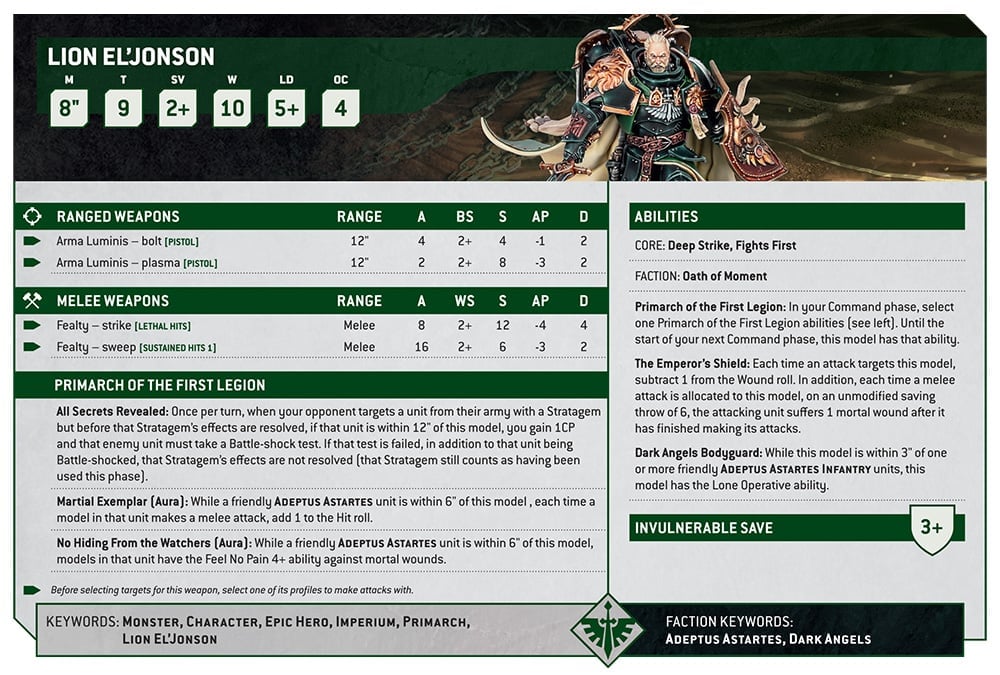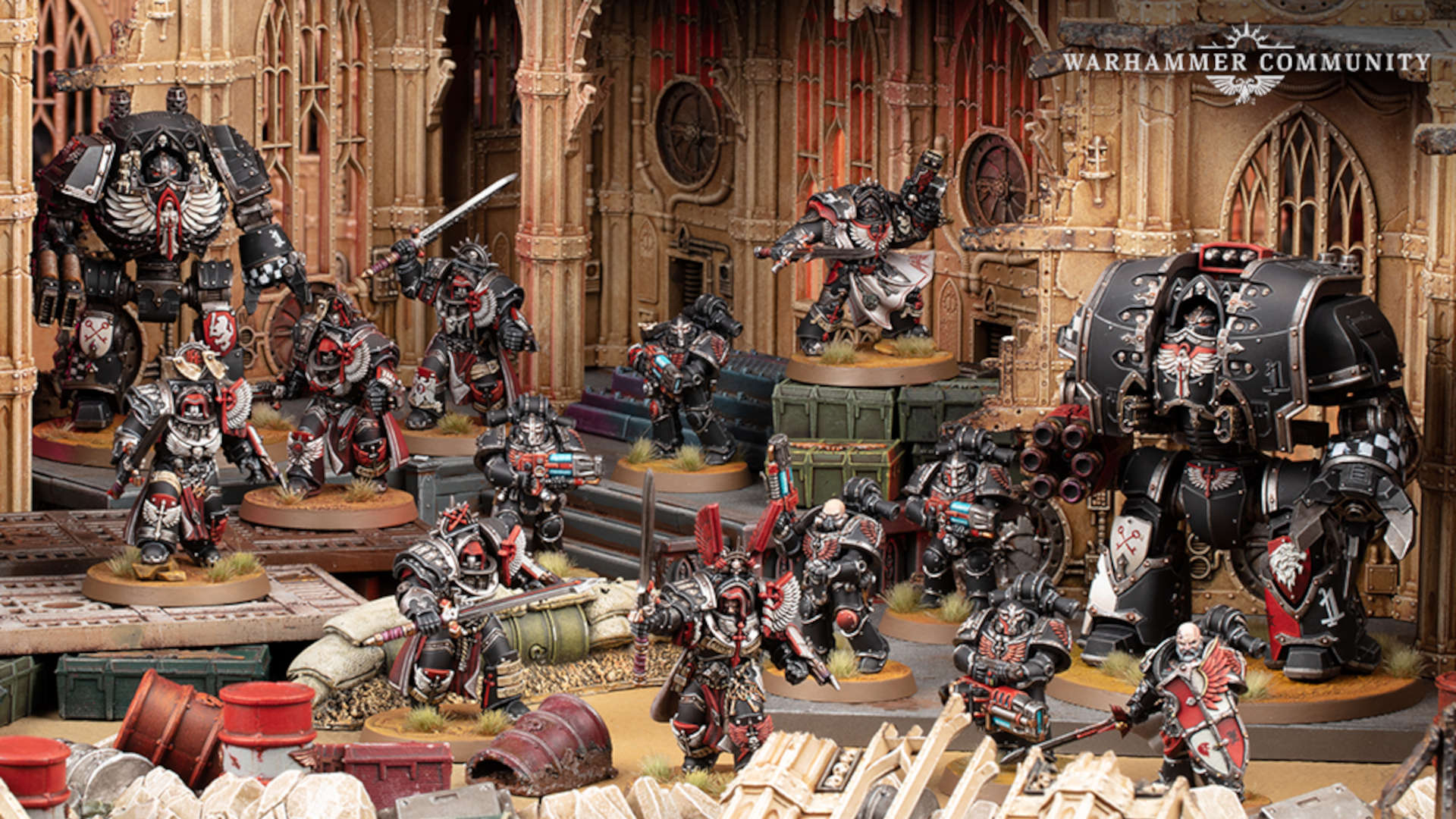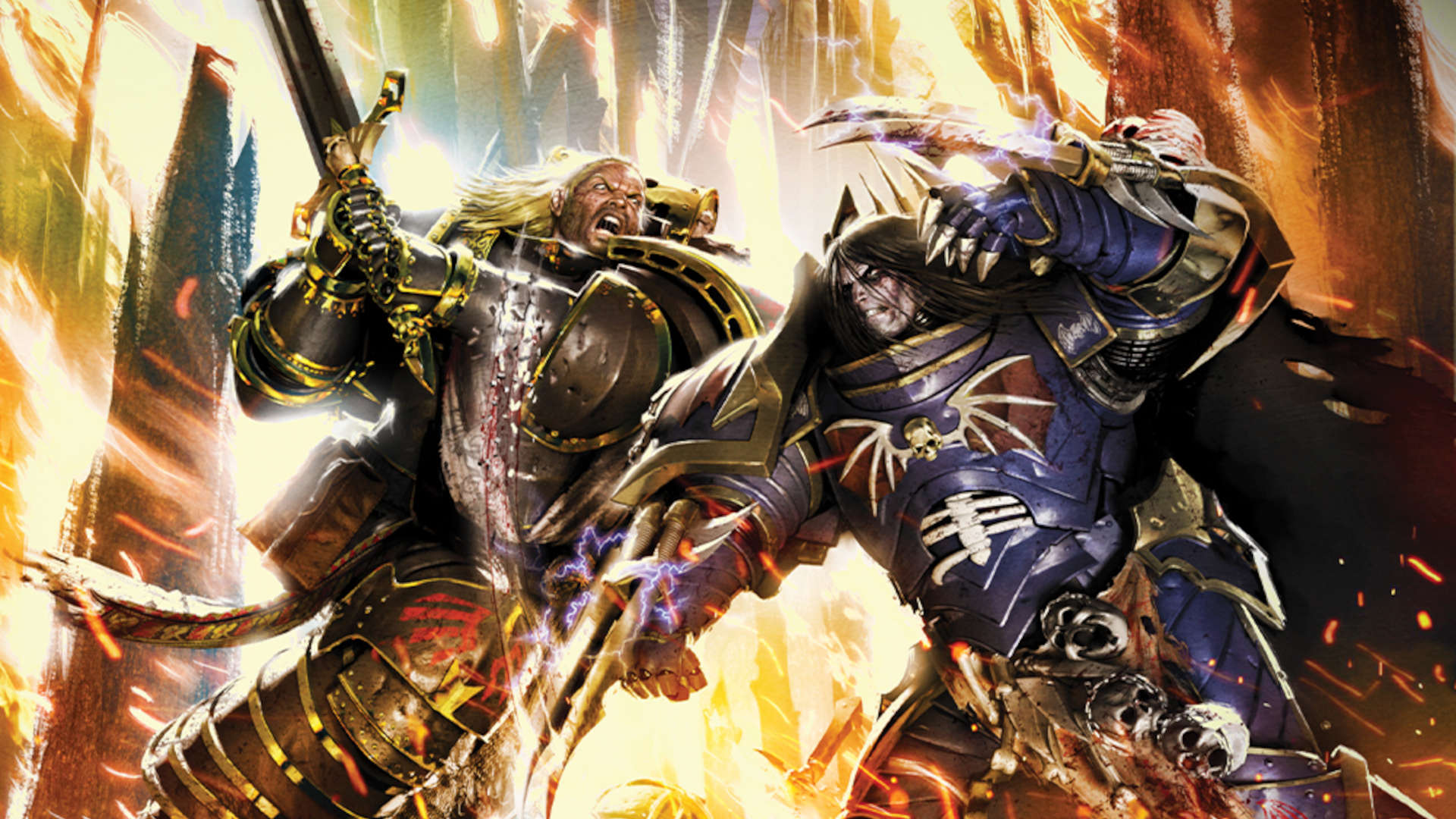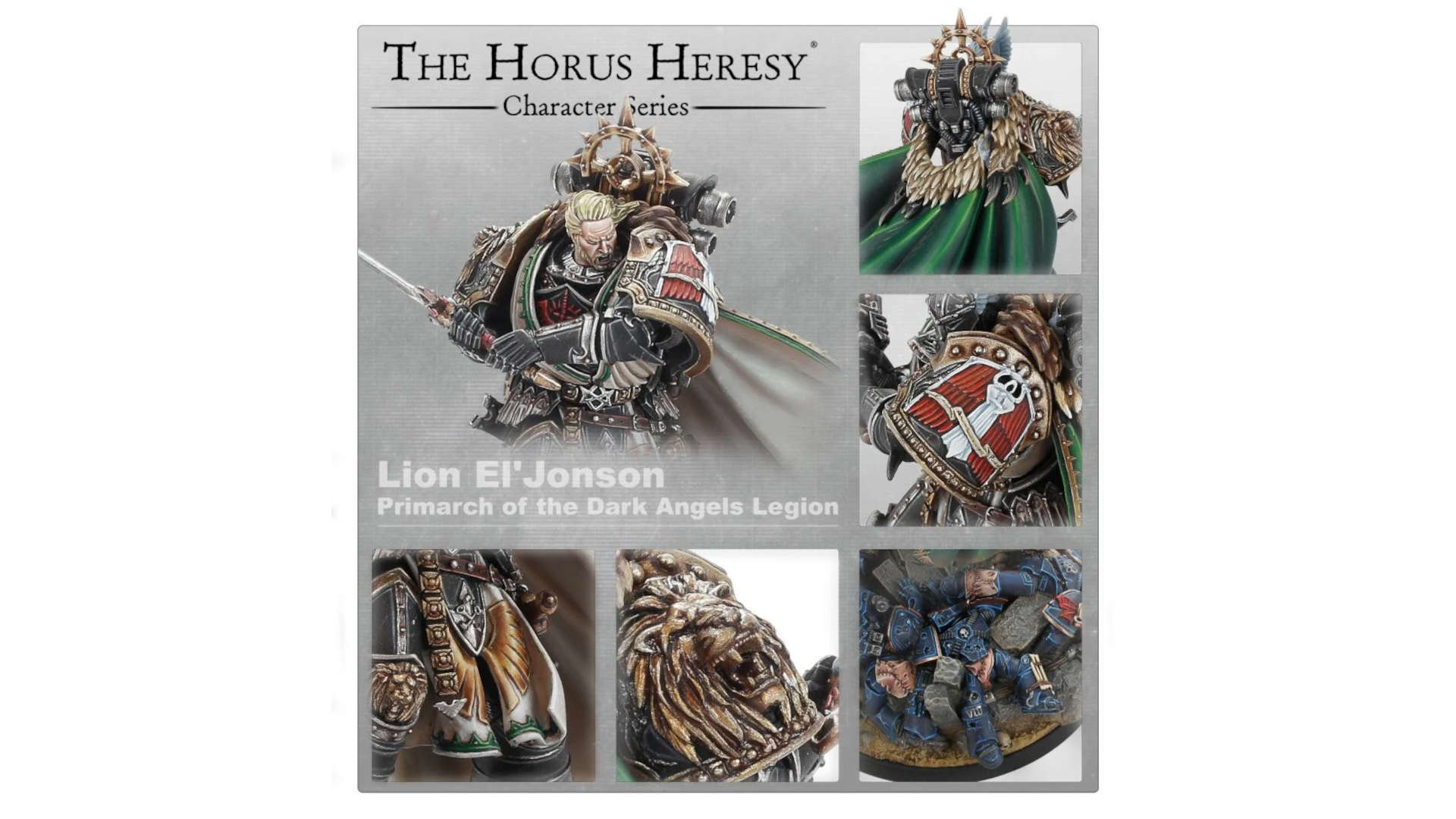Lion El’Jonson is the Primarch of the Dark Angels, the first Legion Astartes. Unlike many of his lost brethren, in Warhammer 40k Lion El’Jonson is alive – and very soon, he’ll return to the tabletop with an awesome new model.
A Knight who battled the creatures of Chaos even before he was discovered by the Emperor, Jonson’s story is filled with heroism, glory, tragedy, deceit, and misplaced trust.
This article covers everything you need to know about Warhammer 40k Lion El’Jonson, the Dark Angels Primarch, including:
- Lion El’Jonson Warhammer 40k Model
- Lion El’Jonson 10th edition Datasheet
- Lion El’Jonson in the Horus Heresy
- Why is Lion El’Jonson still alive in Warhammer 40k?
- Lion El’Jonson Horus Heresy rules
- Lion El’Jonson name meaning
Lion El’Jonson Warhammer 40k Model
Games Workshop previewed a new Lion El’Jonson Warhammer 40k model on March 23 2023 at Adepticon, marking his return to the 41st Millennium.
Jonson is no longer wielding The Lion’s Blade – his legendary sword that he wielded during the Horus Heresy. That fated, broken weapon is still in the possession of the inscrutable (and probably treacherous) Cypher, a mysterious Fallen Dark Angel who has eluded capture for over 10,000 years.
Jonson is now armed with the Emperor’s Shield, a mighty artefact to match the Emperor’s sword gifted to his brother Primarch Roboute Guilliman of the Ultramarines.
The new Jonson model can be built with four different helmets. His aged features – which rather remind us of British character actor Charles Dance – reflect Jonson’s incredible age. Unlike Roboute Guilliman, who spent most of the thousands of years since the Horus Heresy in stasis, Jonson was alive but asleep.
Lion El’Jonson 10th edition datasheet
Games Workshop released Lion El’Jonson’s 10th edition datasheet in the free Index Dark Angels rules for Warhammer 40k 10th edition. He’s an absolute melee monster, with the Fights First core ability giving him the first swing in any combat (except against equally nimble opponents), and a sword arm that can batter apart tanks or rip infantry swarms apart.
He’s comparatively survivable for an elite character model: his Dark Angels Bodyguard ability grants him Lone Operative when within 3″ of other Adeptus Astartes Infantry, making him invisible to enemy shooting further than 12″ away, and the Emperor’s Shield penalises enemy attackers with -1 to wound.
On top of all that, as Primarch of the First Legion he has a choice of three utility auras that he can activate in the Command Phase, interfering with enemy Stratagems, boosting the melee prowess of Astartes warriors, or protecting against mortal wounds.
Click here to download your free Dark Angels 10th edition Index cards, including the Datasheet for Lion El’Jonson.
Lion El’Jonson in the Horus Heresy
The Lion’s life story first appeared in the 2nd Edition Warhammer 40k Codex ‘Angels of Death’, which contained rules and lore for the Dark Angels and Blood Angels Chapters of Space Marines. Though it has been embellished since then, the core points haven’t changed.
Like all the Primarchs, Lion El’Jonson was created by the Emperor of Mankind to lead the forces of his Great Crusade that would found the Imperium of Man. While still an infant, the Warhammer 40k Chaos Gods ripped the Primarchs away from their father’s gene laboratory, scattering them across the galaxy. Jonson would land on the planet Caliban.
Caliban was a dark and fearsome world, covered in dense forests and plagued by nightmarish monsters. Civilization clustered around the castles and holdfasts of noble knights, who were sworn to drive back the great beasts that lurked in the wilderness. Yet Jonson landed in the deep wilds, and lived his earliest years alone, cut-off from human contact and surrounded by the deadliest creatures known to mankind.
Jonson was discovered when still a youth by a band of knights. These were from the Order, an organization that cut across the rigid strata of Calibanite nobility. The warriors might have killed Jonson then, fearing him to be some strange and terrible creature of the woods, were it not for their master, Luther. He took Jonson in, bringing him into the Order’s fortress monastery where he quickly excelled in the nightly arts of war.
The two formed a close partnership. Jonson had the supernatural tactical acumen engineered into him by the Emperor, while Luther had an easy charisma that the isolated Jonson could never match. Gradually, the two great warriors became famed and respected war leaders, and close friends.
Over many years, Jonson and Luther united the disparate noble houses of the planet, leading a grand war that purged the planet of the terrifying monsters that had plagued it for so many years. Ultimately, it was Jonson who was declared the Supreme Grand Master of the Order, and master of Caliban – not Luther.
When the Emperor and the Great Crusade reached Caliban, Jonson delivered the world into the Imperial fold, and joined his father in the reconquest of the galaxy at the head of the Dark Angels legion. Luther joined him as second in command – though too old to become a full Astartes, he was given some of their supernatural gifts. But the seed of resentment rankled in Luther’s heart. He should have been the saviour of Caliban – Jonson had stolen his destiny from him.
While crusading against the Xenos race known as the Sarosh, Luther discovered a deadly weapon that the aliens had sequestered aboard the ship in an attempt to assassinate the Primarch. Rather than alert his battle brother, Luther wavered. Was this his chance to seize command?
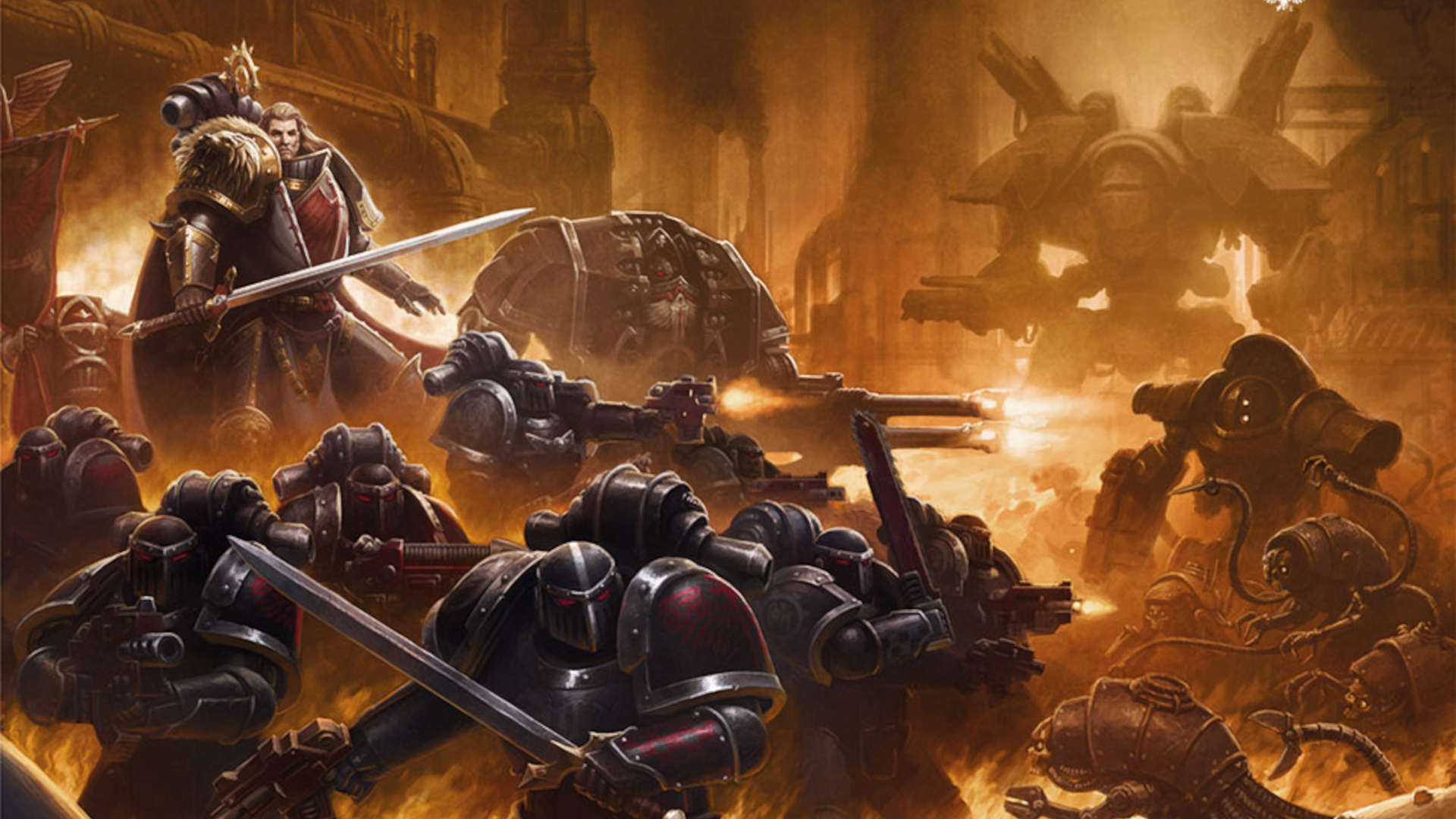
Ultimately his better nature won out and he defused the bomb, but there was no way he could hide the truth of his near-betrayal from the Primarch. Luther, and a huge number of other Astartes, were banished to Caliban by Jonson, under the pretence that they were sent there to improve the recruitment of Astartes initiates.
Jonson did not know it, but by spurning Luther he brought disaster on his legion. He would not return to Caliban until it was much too late to avert the tragedy that unfolded there. And though he would not admit it, he was not quite the man he had been with Luther at his side.
Jonson’s own pride was keenly hurt when Horus Lupercal was awarded the title of Warmaster instead of him. When news of the Horus Heresy first reached him, most of his legion was heavily engaged in a distant war against an Alien empire, too far from the Istvaan system to participate in the retaliation action against the traitors. Nevertheless, he saw an opportunity to make a decisive contribution. Taking a pinpoint strikeforce, he made all haste to the Adeptus Mechanicus Forgeworld of Diamet, where he raced against the forces of the Warmaster to secure some truly magnificent siege machines created early in the Great Crusade and never used.
Though Jonson was victorious in securing the weapons, his lack of insight into the character of others cost the Imperium dearly. He entrusted the mighty siege weapons to the Iron Warriors primarch Perturabo, whose treachery was yet to be revealed.
During the Heresy, Jonson mainly fought against the Night Lords, clashing many times with their Primarch Konrad Curze, first in the Thramas sector, then in the region of Macragge. He was one of the three loyal Primarchs who founded Imperium Secundus around the core of the Ultramarines‘ empire in Macragge when it seemed the true Imperium had fallen. Though Jonson raced to rejoin the Emperor before the siege of Terra, he did not participate in the ultimate battle for the fate of mankind.
After the Heresy, Jonson returned to Caliban with his warriors, only to discover the planet had fallen to treachery. Luther and the remaining Dark Angels on Caliban had rebelled against an Imperium and a Primarch they believed had betrayed them. The Lion’s wrath was furious, He assaulted his home world with devastating force, bombarding it from orbit and teleporting in himself at the head of an assault on Luther’s holdout within the fortress monastery of the Order.
The final conflict between Luther and The Lion was accompanied by all the dark machinations of the Warp. Terrifying energies ripped apart the planet Caliban, sucking it into the imaterium, leaving behind a shattered lump of rock to which the fortress monastery still clung – ever after, this would be known as The Rock. Luther lived, but his mind was shattered. The fate of Lion El’Jonson is stranger still – for on that day he disappeared. Since then the Dark Angels have hidden all trace of their past, and hunt their Fallen brethren with the dedication of fanatics.
The Dark Angels history makes for some of the most convoluted parts of the Horus Heresy, with double-crosses, lies, secrets, and conspiracies: fortunately we have a guide to the best Horus Heresy book reading order to guide you through the web of lies.
Why is Lion El’Jonson still alive in Warhammer 40k?
The Angels of Death codex established that Jonson is alive, but asleep, in the depths of the Rock, attended by the mysterious aliens known as the Watchers in the Dark. Jonson awaits the hour when the Imperium needs him most – very King Athur. This prophecy has resulted in rumours of a Warhammer 40k model for the Lion every time a new edition rolls around.
We now know that the snoozy primarch is waking up for Warhammer 40k 10th edition, with a brand new model sporting grizzled, Charles Dance-like features that reflect his thousands of years of slumber.
Lion El’Jonson Horus Heresy rules
The Lion has a suitably epic model available from Games Workshop’s subsidiary Forgeworld, which can be used in games of Warhammer: The Horus Heresy. His rules are in the Liber Astartes: Loyalist Legiones Astartes Army Book.
The Lion emphasises the Knightly aspect of the Dark Angels, providing a few, melee combat buffs to other Dark Angels. As Sire of the Dark Angels he grants his legionaries the Crusader special rule, making them more likely to sweep away enemies when they win combat, as well as a leadership buff to any Dark Angels who can him.
He’s also one of the premier death star pilots in the game. The Point of The Blade ability lets him, and any unit he has joined, make an unmodifiable 8” charge move instead of rolling to charge. It can’t be overstated how powerful this option is for a melee powerhouse unit.
And the Lion is certainly a melee powerhouse. Not only does he have the typical strength of a Primarch, and a choice of two deadly swords, but as he loses wounds (and his temper) The Lion’s Choler ability grants him additional attacks. He is also a master of all the mysteries of the Dark Angels, and can choose any one of the six possible Hexagrammaton army wide abilities to use at the start of each turn, not just once at the start of the battle.
Lion El’Jonson name meaning
In Calibanite, Jonson’s name means “The Lion, son of the forest”. It’s a reference to his golden hair, fierce demeanour, and the place he was discovered by Luther and the Order.
Unlike a lot of the Primarchs, the Lion’s name isn’t a Latin pun on his Legion’s title (unlike Ferrus Manus of the Iron Hands or Corvus Corax of the Raven Guard). Instead it’s a literary reference to the Victorian poet Lionel Johnson, the author of the poem “The Dark Angel”.
Johnson (the poet, not the Primarch) was gay, and could not reconcile his sexuality with his Catholic faith, nor with the homophobic society he lived in. The Dark Angel is a poem about his inner struggle.
Some fans have hypothesised that there are other allusions to homosexuality in Dark Angels lore, whether that’s a possible sexual dimension to the friendship and breakup between The Lion and Luther, or the claim that ‘The Rock’ is named after a gay club close to the GW design offices when the Angels of Death codex was written. Wargamer hasn’t seen a statement by Rick Priestley or Jervis Johnson, the two authors of Angels of Death, that would confirm this rumour.
